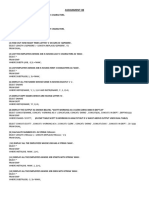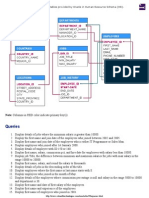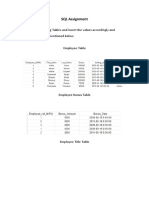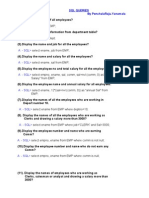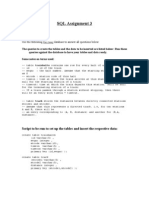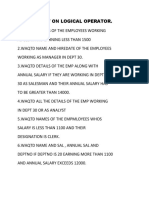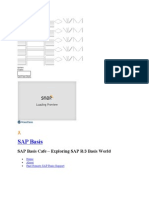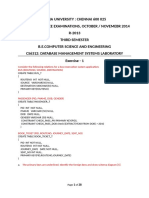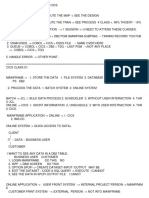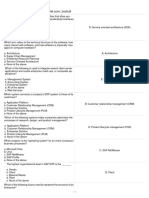100% found this document useful (2 votes)
6K views10 pagesOracle 11g HR Schema SQL Practice
The document describes the structure of tables in the Human Resource Schema in Oracle Database 11g and provides 52 example queries on those tables. The queries retrieve employee, job, department, and other data. They use functions like SELECT, WHERE, GROUP BY, HAVING, JOIN, and aggregate functions.
Uploaded by
agile singhCopyright
© © All Rights Reserved
We take content rights seriously. If you suspect this is your content, claim it here.
Available Formats
Download as DOCX, PDF, TXT or read online on Scribd
100% found this document useful (2 votes)
6K views10 pagesOracle 11g HR Schema SQL Practice
The document describes the structure of tables in the Human Resource Schema in Oracle Database 11g and provides 52 example queries on those tables. The queries retrieve employee, job, department, and other data. They use functions like SELECT, WHERE, GROUP BY, HAVING, JOIN, and aggregate functions.
Uploaded by
agile singhCopyright
© © All Rights Reserved
We take content rights seriously. If you suspect this is your content, claim it here.
Available Formats
Download as DOCX, PDF, TXT or read online on Scribd
/ 10





